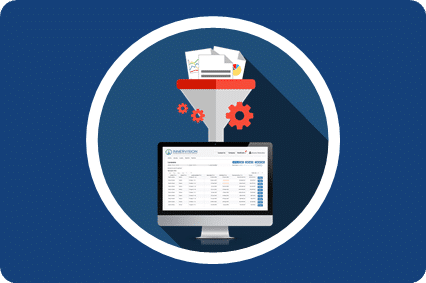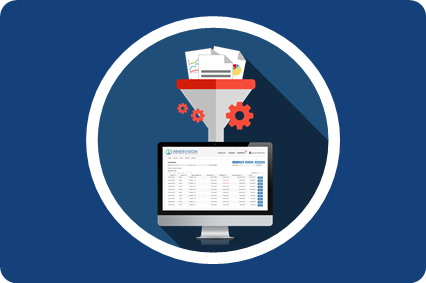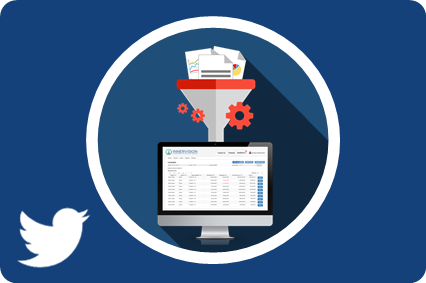BLOGS
5 Essential Steps to Effective Leasing

Leasing should be a cost-effective solution to asset finance, not a burden. Here's how to do it right.
As a potentially superior source of finance for any company wanting to fund their assets, leasing can provide considerable relief on capital expenditure, technological obsolescence and procurement requirements.
Unfortunately, even industry leaders are not making the most out of their lease arrangements and are missing out on savings opportunities due to a lack of leasing expertise or lease management system.
Deciding the Right Lease Type
There are numerous varieties and variations of a lease that you can discuss and arrange with your funder:
A Finance Lease will provide you with greater control over your asset, but the initial lease rentals will be higher as you will pay the full cost of the asset over the initial lease term. You will also be able to take a percentage of its resell value after your lease ends or is terminated. A finance lease typically works best when you expect to use the asset for a long period and probably beyond the initial lease period.
An Operating Lease is less expensive, due to the residual invested by the lessor, but you will not exert as much control over the asset. Currently, under the operating lease the asset and liability are “off-balance sheet”, which is seen as a key benefit to many large organisations. However, this is set to change with the announcement of new lease accounting rules. Operating leases work well when assets are replaced or refreshed regularly and organisations do not want the hassle or responsibility of re-marketing.
These are the two classifications of a lease under existing US GAAP and IFRS lease accounting regulations. There are variations of the main principles of these leases, such as contract hire, which is a maintenance inclusive operating lease arrangement typically used for all types of vehicles and forklift trucks.
There are benefits and drawbacks to each lease type therefore your company’s individual situation will determine which structure suits you best.
Ensuring You Have the Right Documentation in Place
Lease documentation is complex, can look onerous and there are a number of potential pitfalls to avoid, so expert advice is recommended. There are a number of key commercial areas that you need to make sure are covered in your documentation – in particular early termination, end-of-lease options, return conditions, default provisions, warranties and indemnities as well as any hidden costs that may be less obvious.
Checking these aspects of the agreement will ensure you have got what you asked for from your lease: if you leased an asset which quickly depreciates in value then you will want to ensure that your lease doesn’t continue after or finish before you set up your next lease. Additionally, you will want the end-of-lease options to favour your business so that you can choose whether or not to extend a lease with an existing lessor or choose a more competitive alternative.
Additionally, although leasing can often be a more cost-effective measure than buying, it is also vital to read your documentation to see if there are any hidden costs included. Only by doing this, and the other measures described above, will you ensure effective and transparent leasing for your business.
Recognising Whether You are Getting Competitive Quotes/Options
Are you getting the best quote? Are you regularly going out to tender for your lease agreements? Are you aware of the Total Cost of Ownership (TCO)?
These are just some of the questions you need answered to know if you are getting the best value-for-money lease(s). In the fast-paced business market, it is imperative to keep yourself updated with the latest news and developments. The same is also true for leasing.
Lessors come and go, their behaviour changes depending on their ambitions (or lack of ambitions) for future business, pricing varies, and new competitive lessors join the market. Recognising whether there is a better deal available is always vital to effective leasing. You may have leased with one lessor for a lengthy period, but if there is better value for money in the market it could be time for you to switch. The same is also true for tendering your lease agreements and keeping track of your TCO.
Knowledge of Up & Coming New Lease Accounting Rules
As with current developments in the leasing market, it is also essential to remain updated on the upcoming changes to lease accounting.
These regulations are currently governed by the Financial Accounting Standards Boards (FASB) and the International Accounting Standards Boards (IASB). The on-going project will result in operating lease assets and liabilities being included on lessees’ balance sheets, the objective being to ensure greater transparency and comparability for relevant organisations.
Being aware of any changes to these standards is important for you, as a lessee, because of the need to report on your leasing activities to ensure compliance but also to plan ahead to make sure future changes are understood.
The release of these new lease accounting rules, which is set to be finalised before the end of 2015, will have a dramatic effect on leasing structures and strategies. Make sure you are aware of the full details before deciding on the right lease for you.
More Information on Lease Accounting: Click here for our easy to follow overview of the new accounting standard.
Managing you Existing Lease Portfolio
After your lease arrangements are up and running, don't just file away the paperwork and forget about it. This is a guaranteed way of wasting time and money as lease portfolios need consistent and pro-active management. Chances are you are not going to lease one or two but many assets as part of your arrangements. They may not even be in the same category, but a mixture such as IT, plant & machinery as well as HGVs.
You will also have leased these assets over different periods of time, within different departments, at different locations and with different lessors. It is therefore important that you have an internal system to help you pro-actively manage your leases so your organisation can identify assets whose leases are coming to an end so that you can give the lessor notice to avoid any secondary costs.
By tracking your portfolio you can also identify your outstanding liabilities, cost savings and improve efficiency and reporting, thus ensuring the efficient running of your assets and, by extension, your operations.
Following these steps will ensure that any company is able to navigate the complexities and developments of the leasing market. If this all sounds a bit complicated and a bit too much work then there is no need to worry because this is what a specialist lease consultancy is for. Innervision’s leasing experts can help guide a company through the process, helping both new and existing lessees integrate leasing into their business operations via expert knowledge and our specialised lease management software LOIS.
For more information on how Lease management software can help improve your company’s leasing and drive greater productivity and savings, download our guide here.
Share This Article:












